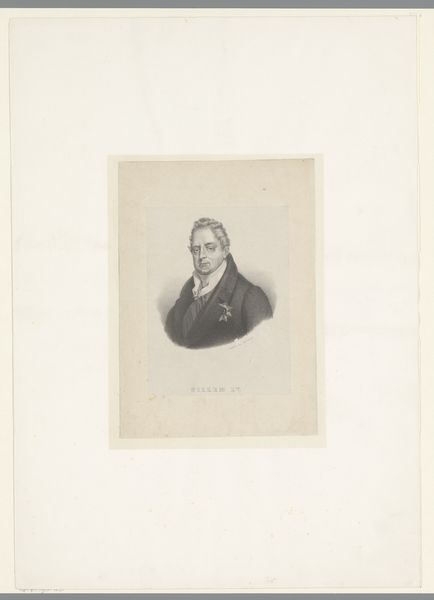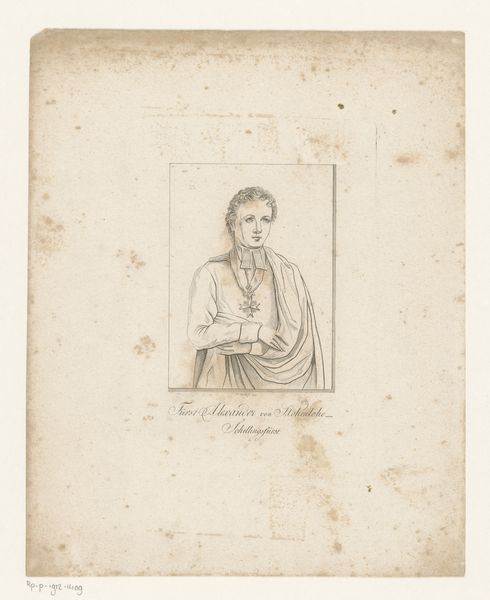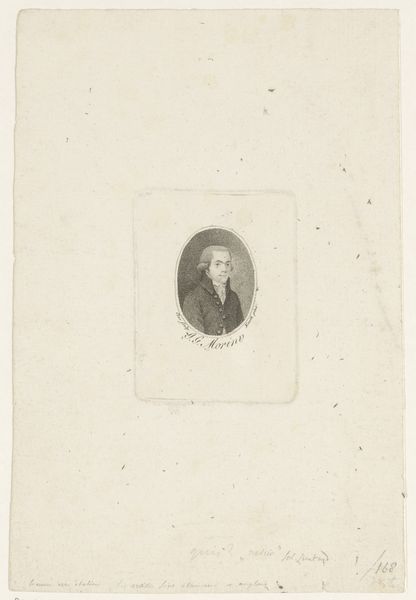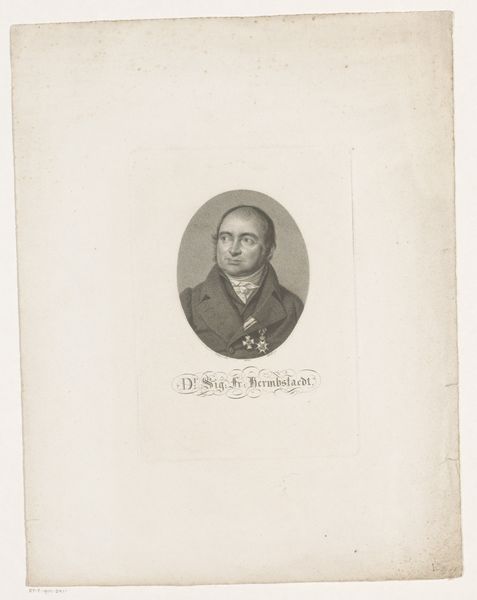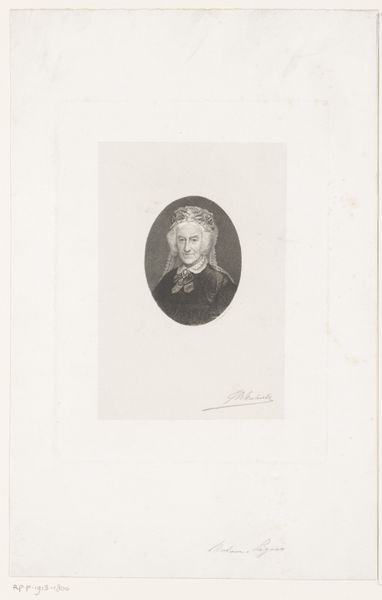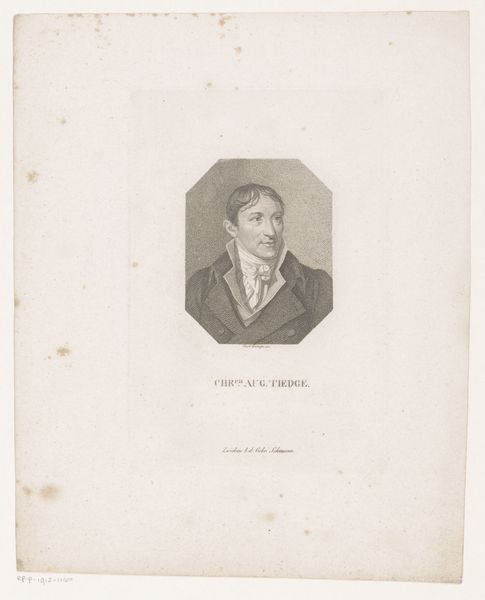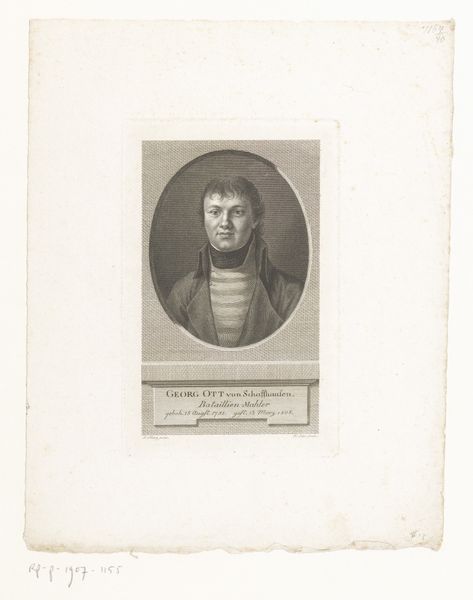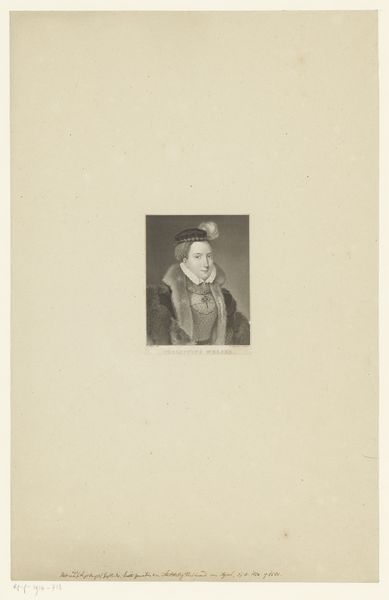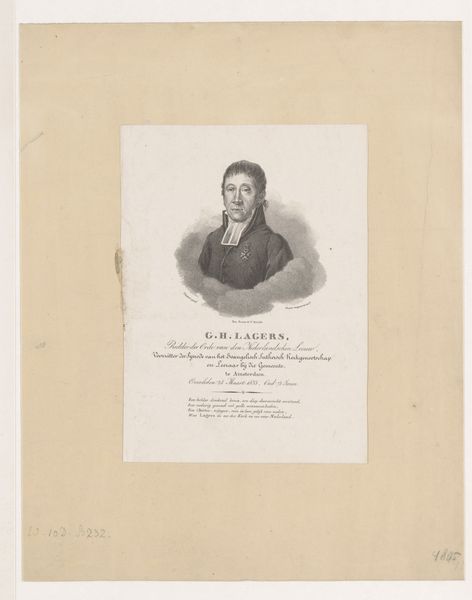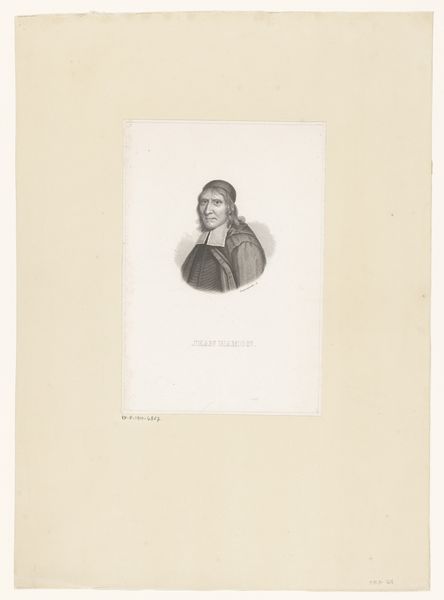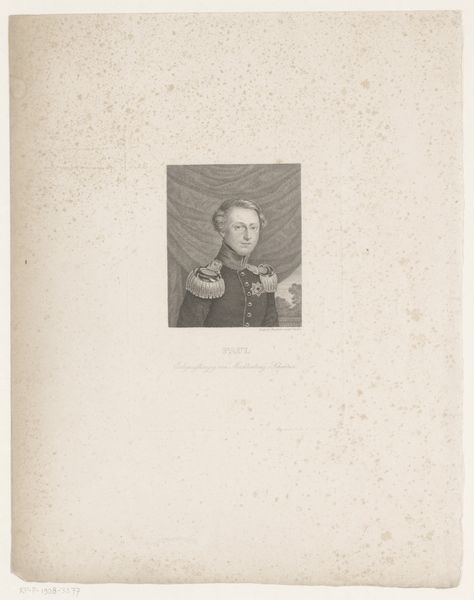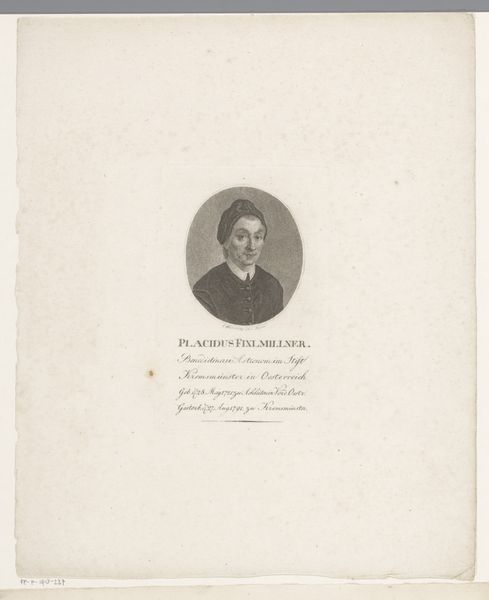
print, engraving
#
portrait
#
neoclacissism
# print
#
old engraving style
#
white palette
#
form
#
line
#
academic-art
#
engraving
#
realism
Dimensions: height 194 mm, width 139 mm
Copyright: Rijks Museum: Open Domain
Curator: Immediately striking is this soft, almost ghostly rendering. Editor: Agreed, it has a melancholic air, like a faded memory pressed between the pages of a very old book. Curator: The artwork is a portrait of Johann Wendt by Johann Friedrich Bolt, created in 1824. It is an engraving. Editor: Wendt looks a bit… stern? The gaze is direct, unyielding. I’m also fascinated by that medal pinned to his coat. What does it signify, do you think? Curator: Medals at the time were more than mere decorations. They often symbolized allegiance to the state and civic virtue and were deeply meaningful assertions of class and status. I read them almost as coded visual statements within these types of images. The stern expression you picked up on may also signify an association with leadership or valor. Editor: Absolutely. The oval frame and the tightly controlled lines certainly reinforce that impression of formality. It almost feels like a…visual restraint, which reflects the Neoclassical period nicely. The white palette is almost sterile, perhaps lending even further to a lack of warmth? Curator: Precisely. Look closely, though, at the use of line—so precise, each marking contributing to the overall form, an academic devotion to form. Notice how even the wisps of hair and delicate details around the face are rendered. Each mark shows his careful and realistic rendering of the sitter's appearance. This is more than just recording the likeness; it also shows ideals around rational representation. Editor: Right, but beyond the objective record, what survives in my view, despite the artistic approach or cultural context, is how the rendering manages to carry such a sense of dignity, even gravity. I am reminded of the kind of photographic portraiture from the 19th century, but rendered here on this earlier medium of an engraving. It carries the echo of another time and place. Curator: I concur. In delving into art, history, and the interplay of social markers, one cannot help but consider enduring motifs in the art over the years. Editor: These journeys back to a moment in time become like little philosophical experiments. I mean, they give you a chance to test drive historical context and see how it drives feeling today. Thanks!
Comments
No comments
Be the first to comment and join the conversation on the ultimate creative platform.
